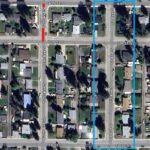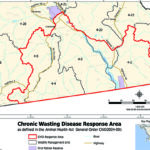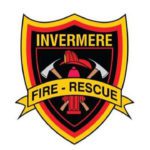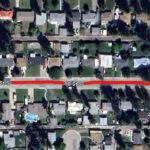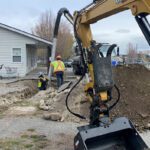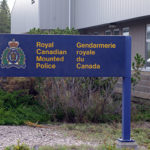Home »

LWA bolstered by Columbia Valley Local Conservation Fund

Because of a myriad of pressures on Lake Windermere from development and recreational use, the health of the waterway remains a concern for all residents, visitors and relevant government agencies.
Recognizing the need for updated scientific findings and study on the lake, and the need for continued study, the Lake Windermere Ambassadors (LWA) formed and for the past three years the mostly volunteer-led organization has conducted regular water testing and monitoring of the lake.
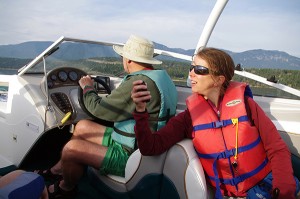
Providing some of the funds for the project has been the Regional District of East Kootenay’s (RDEK) Columbia Valley Local Conservation Fund (CVLCF), managed in partnership with the Kootenay Conservation Program (KCP) and derived from a $20 annual levy of properties in the valley by the regional government.
LWA Program Coordinator Kirsten Harma says the CVLCF was instrumental in getting the Ambassadors started with an $18,000 grant.
“It was a huge component when we first started,” she said.

KCP Program Manager Dave Hillary said the CVLCF has been instrumental in helping to support a wide number of projects in the Columbia Valley that wouldn’t have otherwise found funding.
While some funding amounts have been “small,” Hillary noted, “Conservation impacts can be substantial.”
The RDEK-collected fund generates approximately $230,000 a year and supports between six and 12 projects annually.
 “It’s been the right amount of money so far,” Hillary said.
“It’s been the right amount of money so far,” Hillary said.
It is volunteers who drive the LWA, Harma said while riding south on Lake Windermere on a calm, sunny mid-August morning.
Operating the boat was volunteer Gavin Jacobs, ferrying her and a volunteer to three designated locations on the lake where the LWA conducts a series of tests: between Fort Point and Timber Ridge (the deepest part of the lake); off Windermere Creek; and near the south end of the lake.
Harma conducts a series of tests, utilizing several thousand dollars in monitoring equipment at all three locations.
The strength in the monitoring work is the bigger picture developed over time with a bank of data to consider, she said. “We can look at a number of things over time and then start to peel back the layers,” she said.

KCP’s Hillary and Administrative Assistant Duncan Whittick accompanied Harma on this day, part of a program audit required to ensure the project is progressing as planned. Each project that receives funding must present two annual reports and occasionally host a field-audit.
Included in the audit was a look at the shoreline restoration work the LWA has undertaken at the southeast end of Invermere’s Kinsmen Beach.
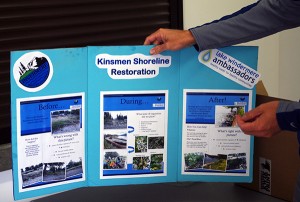
The work came about as a result of a shoreline inventory completed by the East Kootenay Integrated Lake Management Partnership.
‘The section of beach was identified as having moderate habitat values and as being somewhere where restoration could increase ecological value,” Harma said, explaining why the location was chosen.
LWA have worked extensively with the District of Invermere on the project. It has included physical works to prevent erosion and planting of native plants with the goal of improving fish and wildlife habitat value.
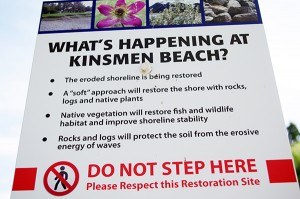 About $30,000 has been spent in the past two years, with close to that amount of “in-kind” services and materials received, Harma said, adding she believes the work will educate many lakeside property owners and hopefully spur some of them to follow suit.
About $30,000 has been spent in the past two years, with close to that amount of “in-kind” services and materials received, Harma said, adding she believes the work will educate many lakeside property owners and hopefully spur some of them to follow suit.
The time remains perfect for the LWA’s work to continue, Harma said.
“The issues haven’t gone away because the boom ended,” she said, referring to the slow down of development around the lake since 2008.
There remains a strong need for watershed governance, expanded lake stewardship, monitoring and education, Harma said, pointing out Lake Windermere is still a beautiful and healthy lake, even if much of its shoreline has been impacted.
“But it’s not going to stay this way on its own,” she cautioned, adding she is thankful the CVLCF is available to help with the always-difficult-to-find funds for such projects as the LWA.
For more: http://www.lakeambassadors.ca .
Above photo: KCP Program Manager Dave Hillary lends a helping hand while Kirsten Harma conducts a series of tests.

Submitted
Photos courtesy: Kootenay Conservation Program
